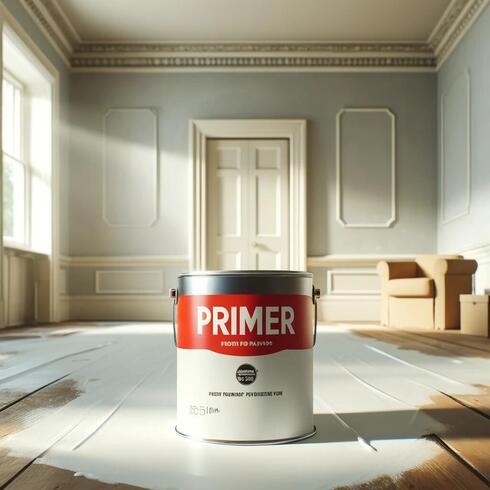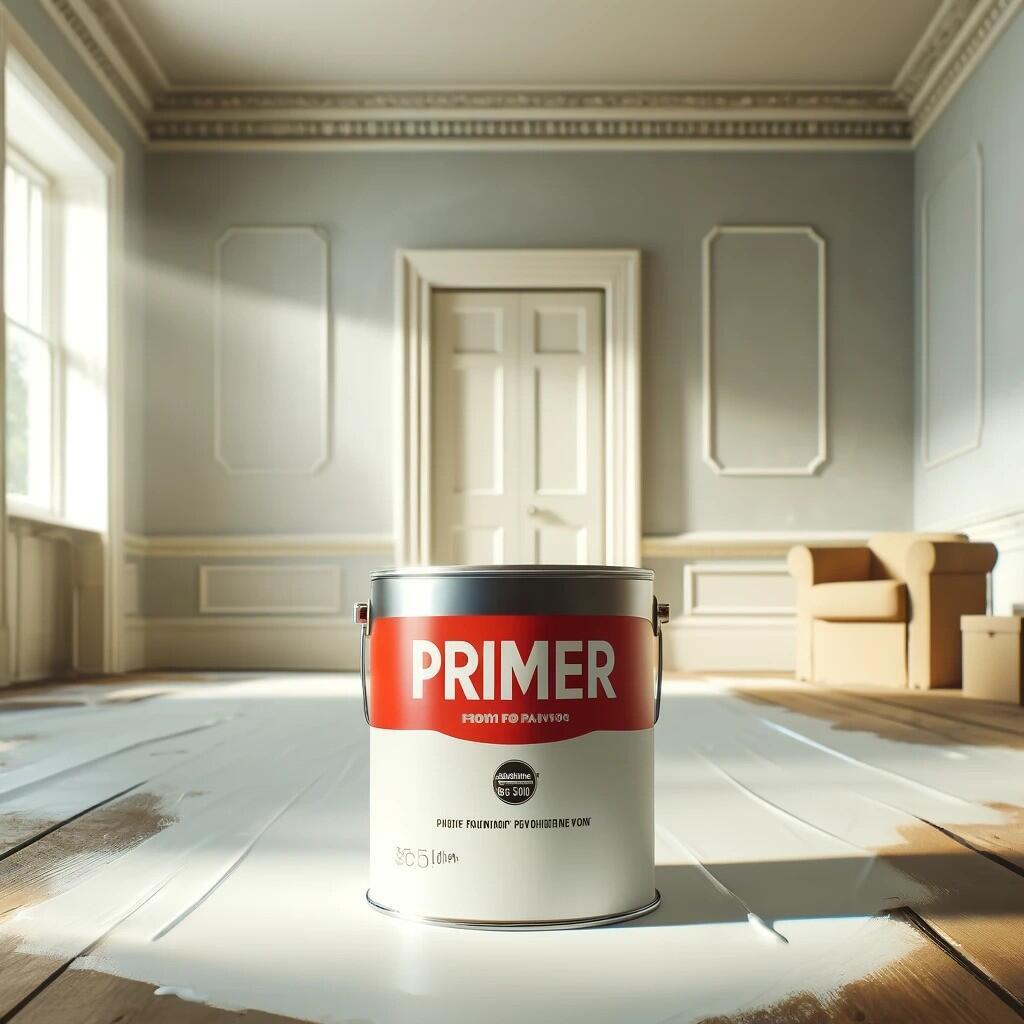
Is Wall Primer Really Important When You're Painting a Room?
Is Wall Primer Really Important When You're Painting a Room?
Discover why using wall primer is important for achieving smoother, more durable results in your painting projects.
When you decide to paint a room, it's like preparing for a makeover. The color you choose can transform the space, but the success of this transformation heavily depends on your preparation, particularly whether you use wall primer.
Despite its critical role, many DIY painters often skip over this step, thinking if it’s really necessary. Therefore, it is necessary to shed light on the importance of wall primer and how it can impact your next painting project.
Understanding Wall Primer
Wall primer is not just another layer of paint; it's a preparatory coating applied before the paint to ensure the finish is smooth, durable, and flawless. Primers are designed to adhere to the wall's surface and create a sticky base to which paint can easily bond.
When you're about to use primer, you can choose between oil-based, latex-based, or shellac-based options depending on the surface and the type of paint you plan to use.
Each type has specific properties that make them suited for different materials and conditions.
Benefits of Using Wall Primer
You can truly benefit from using wall primer. Some of the benefits you can reap are listed below:
Enhanced Paint Adhesion
You might have noticed that some painted surfaces chip or peel quickly. This often happens due to poor adhesion. Primer forms a grippy surface that paint can cling to more effectively, which reduces peeling and increases the longevity of your paint job.
Improved Paint Appearance
When you don’t use primer, the final paint job can look uneven or blotchy. Primer ensures a uniform base, minimizing imperfections and resulting in a smoother, more even appearance.
Efficiency in Paint Usage
Applying primer might seem like an extra step, but it can actually be cost-effective. Primer seals porous surfaces and prevents them from soaking up too much paint. This means you’ll likely need fewer coats of paint, saving you both time and money.
Protection Features
Primers can also protect walls from moisture, stains, and mold growth, which is especially important in damp areas like bathrooms and kitchens.
Situations that Require Wall Primer
There are situations where it becomes necessary to use a primer. These are listed below:
New Drywall
New drywall is highly absorbent. Without primer, it can soak up the paint, leading to uneven coverage and extra costs.
Dark to Light Color Changes
If you're transitioning from a dark wall color to a lighter one, primer is necessary. It will mask the darker shades effectively and reduce the number of paint coats needed.
Stains and Smell Coverage
Specialized primers can block out stains and odors, providing a neutral base for fresh paint.
Extreme Conditions
In areas with high humidity or other challenging conditions, primer is crucial for preventing paint from deteriorating prematurely.
Common Misconceptions About Wall Primer
Many believe primer is just an optional step and not very necessary. However, skipping it can result in a less durable and less professional-looking finish.
Many people also say that high-quality paint can replace the function of a primer. While some paints do include primer, using a separate primer layer still provides the best base, especially for challenging surfaces.
How to Apply Primer Correctly
While applying primer you need to take care of the following things:
Surface Preparation
The key to effective priming is preparation. Ensure the wall is clean, dry, and smooth. Fill any holes or cracks and sand down any uneven surfaces before applying the primer.
Application Techniques
Primer can be applied with a brush, roller, or sprayer, depending on the size of the area and the type of surface. Ensure even coverage by applying a consistent, thin layer.
Drying and Recoating Times
Normally, primer should dry for at least 24 hours before applying paint. Check the manufacturer’s instructions for specific drying times.
Using an Airless Paint Sprayer for Primer Application
For larger or textured surfaces, an airless paint sprayer can greatly enhance the efficiency and evenness of your primer application. The benefits of using an airless sprayer include faster application and a more uniform layer compared to traditional methods.
How to Set Up and Use
Setting up an airless paint sprayer involves assembling the spray gun, hose, and pump according to the manufacturer’s instructions. Practice spraying on a piece of cardboard to get a feel for the device. When you’re ready, spray the primer in a consistent motion, overlapping each stroke to ensure thorough coverage.
Tips for Best Results
Keep the sprayer at a consistent distance from the wall, generally 12 to 18 inches. Use a back-and-forth motion, and overlap your passes to avoid missed spots or drips.
Effective Strategies for Long-Term Wall Maintenance
Maintaining the pristine appearance of your painted walls doesn't have to be a chore. Here are some straightforward strategies to keep your paint looking fresh:
Immediate Spot Cleaning
Address spills and stains as soon as they occur. Using a soft, damp cloth, gently dab the area to remove marks without damaging the paint. For more stubborn stains, a solution of mild soap and water can be effective. Remember, the quicker you act, the less likely the stain will have time to set.
Periodic Touch-Ups
High-traffic areas are prone to wear and tear. Inspect these spots regularly and apply a small amount of matching paint to cover any imperfections. This quick fix can dramatically extend the overall life and appearance of your paint job.
Protect from Sunlight
Long-term exposure to direct sunlight can fade painted surfaces. Consider hanging curtains or applying UV-protective films to your windows. These barriers not only help in reducing fading but also protect your interior from sun damage.
By implementing these maintenance tips, you can ensure that your walls continue to look vibrant and well-cared for years after the initial paint application.
Conclusion
Wall primer might seem like just another step in the painting process, but its benefits are undeniable. It ensures better adhesion, longevity, and aesthetic appeal of your paint job.
For those using modern tools like an airless paint sprayer, primer application can be quick, efficient, and flawless. Remember to consider the specific needs of your project when deciding whether to prime—more often than not, it’s a step you shouldn’t skip.
First published: 14:04, 18.04.24















